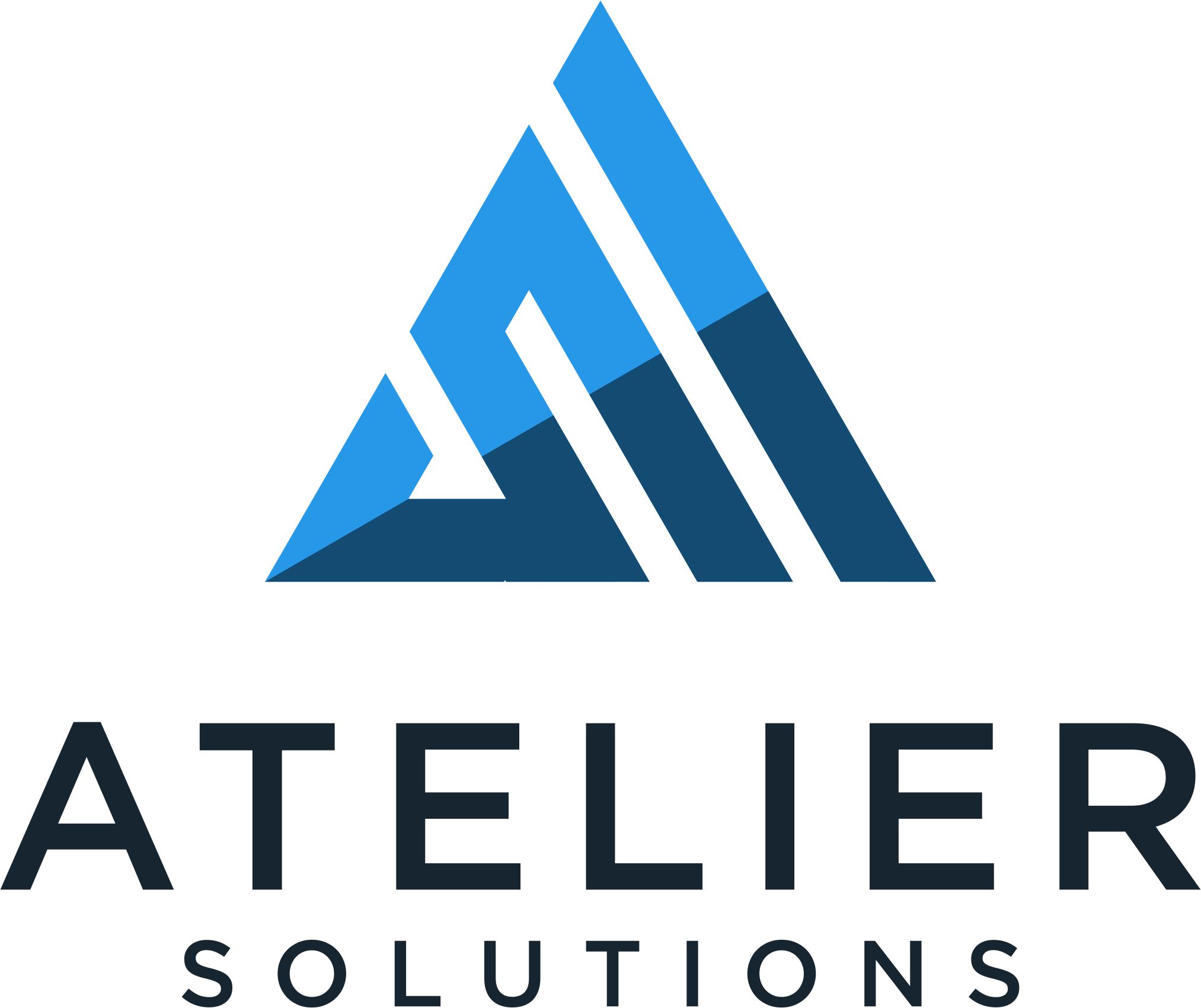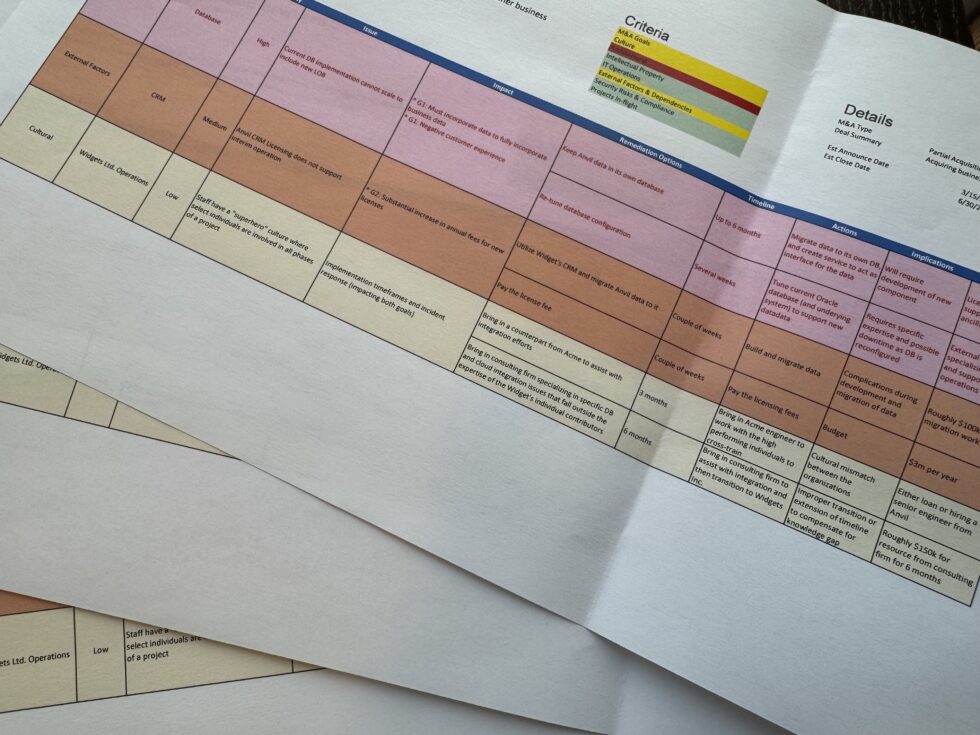As a part of the Tech Diligence newsletter, I released a set of high-level questions that your team should ask that address two objectives:
- To perform the self-evaluation and know what you’re working with
- To ask about your potential acquisition and get an early jump on what the expected costs, risks, and timelines look like
They are high-level specifically to find squishy answers and drill down on them. Ultimately, it is the combination that will give you, the final decision-maker, a clearer picture of what the level of effort will look like. Regardless of whether you are about to ink the deal, or you’re working out the integration details.
Given how much of this can get into the technical weeds, I provide a high-level crib sheet as a part of my evaluation using the two objectives above combined with the goals you want to achieve for the acquisition. This is designed solely to give you an idea of what the boulders are to keep an eye on and get clarification on.
Will this be enough to win or blow a deal?
No
Take this example for how this would work: in the engineering world, there is a concept of the smell. It is a design or implementation that doesn’t quite look right to get a job done. Seeing duct tape being used on a 737 for example may work, but should make you a tad nervous.
That is what this crib sheet is for. A quick easy way to identify the ick and allow you to account for it in the final decision, finalizing the deal, or planning out the integration.
I’ll be in London this week at the FT Due Diligence Live event. Hit me up if you want to know more.
If you want to know more about why the tech matters and how to account for it, then check out the Tech Diligence Newsletter!

